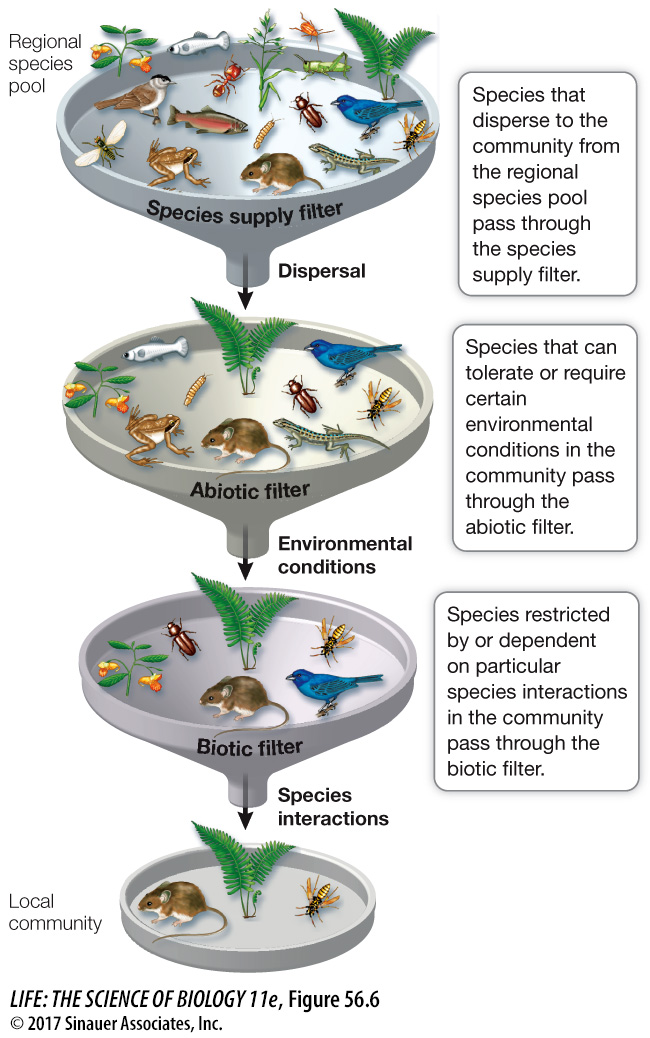key concept 56.2 Community Membership Depends on Species Supply, Environmental Conditions, and Species Interactions
Suppose you are looking across the landscape of Mount St. Helens. You see lakes and ponds, alpine meadows, and forests. There is no doubt that these communities vary not only in their species composition but also their species richness. The lakes might be dominated by fishes, amphibians, and freshwater algae; the alpine meadows by various species of grasses, flowering plants, and rodents; and the forests by trees, shrubs, and birds. Even though some species might move from one community to another, the three communities would still be very different. How is it that species come together to form different communities?
focus your learning
To become community members, species must be present in a region and able to colonize the community.
Environmental conditions serve as an abiotic filter to determine which species colonize a community.
Species already living in a community serve as a biotic filter, determining which colonizing species succeed or fail.
Community membership depends on three basic factors: (1) the regional species pool and dispersal ability (species supply), (2) physical and chemical environmental conditions (abiotic conditions), and (3) species interactions (biotic conditions). Each factor acts as a “filter” that excludes or includes species in particular communities (Focus: Key Figure 56.6). Let’s consider each of these filters in more detail.
1211
focus: key figure

Question
Q: Would it make sense for the fish and frog species in the regional species pool to be present in the local community shown in the figure? Explain.
No, they would not be found in the local community depicted in the figure. The species in the local community are all terrestrial species, and thus fish and frogs, which are aquatic, would be excluded from the community by the abiotic filter.